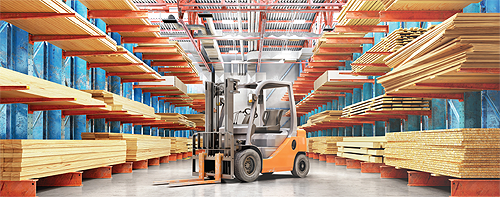
Addressing the problem
Housing affordability has a significant impact on financial security. When housing costs get too high relative to incomes, families suffer.
Roughly 17.6 million American households pay more than half their incomes for housing, according to ‘The State of the Nation’s Housing 2020,’ a report from the Joint Center for Housing Studies at Harvard. Think about that: Millions of families pay more than half their income on their home.
When a family spends a disproportionate amount of its income on rent or a mortgage, it leaves less available for food, medical care, education, transportation and other necessities. Over the long run, it makes it harder for families to save for college or for an adequate nest egg for retirement. And many families are unable to save for unexpected emergencies that inevitably arise.
The housing affordability problem has grown worse in recent years in part because home builders are having trouble keeping pace with demand. Not-In-My-Back-Yard (NIMBY) attitudes in many communities make new developments risky and costly. It can take years to get a project through the review process.
Due to supply chain disruptions stemming in part from the ongoing Covid-19 pandemic, the top challenge for home builders is attaining affordable and reliable sources of building materials. A recent survey of builders conducted by the National Association of Home Builders (NAHB) found that at least 90 percent reported shortages of plywood, framing lumber and oriented strand board. Supply shortages have resulted in soaring building material prices, particularly for lumber, exacerbating the housing affordability crisis.
The price per thousand board feet of lumber on June 4 was nearly $1,450 according to Random Lengths. That’s up more than 300 percent from mid-April 2020, when the price was roughly $350 per thousand board feet.
The record-high lumber costs have pushed up the price of an average new single-family home by almost $36,000, according to analysis by economists at NAHB.
 In addition to its effect on single-family home construction, the lumber price hike has also added nearly $13,000 to the market value of an average new multifamily home. That translates into households paying $119 a month more to rent a new apartment.
In addition to its effect on single-family home construction, the lumber price hike has also added nearly $13,000 to the market value of an average new multifamily home. That translates into households paying $119 a month more to rent a new apartment.
The economic factors behind the lumber shortage are clear: while U.S. sawmill output posted a small three percent gain in 2020, single-family construction increased 12 per cent to almost one million housing starts, and the remodeling market expanded seven percent. This mismatch between domestic production and rising demand for material prices is the driving force behind the unsustainable increases in lumber prices.
And the problem is not confined to lumber prices and supply. Prices paid for goods used in residential construction, excluding energy, have increased more than 12 percent in the past year, according to a recent government Producer Price Index (PPI) report. Prices for copper, brass, steel and ready-mix concrete – down to the nuts and bolts of building a home – are among the commodities prices rising due to stressed supply chains at the global level.
Regulations imposed by federal, state and local governments are another key factor contributing to the nation’s housing affordability challenges. Though often well-intended, they can be excessive, needlessly redundant, or poorly structured and impose tremendous costs on the housing industry that slow economic activity and harm consumers. A new study by economists at NAHB highlights the tremendous cost of regulation on the residential construction industry.
The study found that regulations imposed by all levels of government account for 93,870, or 23.8 percent of the current average sales price ($397,300) of a new single-family home.
The regulatory costs assessed in the study were broken into costs related to land development and to the construction process. Of the $93,870 figure, $41,330 is attributable to regulation during development, and $52,540 is due to regulation during construction.
This illustrates how overregulation is exacerbating the nation’s housing affordability crisis. And it demonstrates why policymakers should take bold steps to reduce or eliminate excessive, poorly designed regulations in order to help builders increase the production of quality, affordable housing to meet growing market demand.
The study demonstrates that residential construction is a heavily regulated industry subject to complex and overlapping rules imposed by federal, state and local authorities. In such a climate, it is useful to have a numerical estimate of the effect of regulation and its aggregate dollar value.
NAHB does not believe that all regulation is bad or should be eliminated. But not all regulations are well-designed and effective. Amid a worsening housing affordability crisis, it is important that policymakers keep in mind the cost of regulation when contemplating new policies or changes to existing ones.
Regulations imposed by all levels of government affect tens of thousands of small businesses and millions of consumers. NAHB encourages lawmakers to consider market approaches that provide flexibility to achieve the desired outcome under various circumstances. Rules that acknowledge market forces and encourage innovation are most likely to meet society’s goals of a cleaner environment, safer workplaces and competitive markets
The housing affordability crisis affects families. Policymakers and other stakeholders can help address the problem by making it easier for home builders to meet the growing demand for housing.

John ‘Chuck’ Fowke is National Association of Home Builders (NAHB) 2021 Chairman of the Board and a custom home builder from Tampa, Fla. The NAHB is a Washington-based trade association representing more than 140,000 members involved in home building, remodeling, multifamily construction, property management, subcontracting, design, housing finance, building product manufacturing and other aspects of residential and light commercial construction. NAHB is affiliated with 700 state and local home builders’ associations around the country. NAHB’s builder members will construct about 80 percent of the new housing units projected for this year.
www.nahb.org